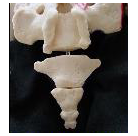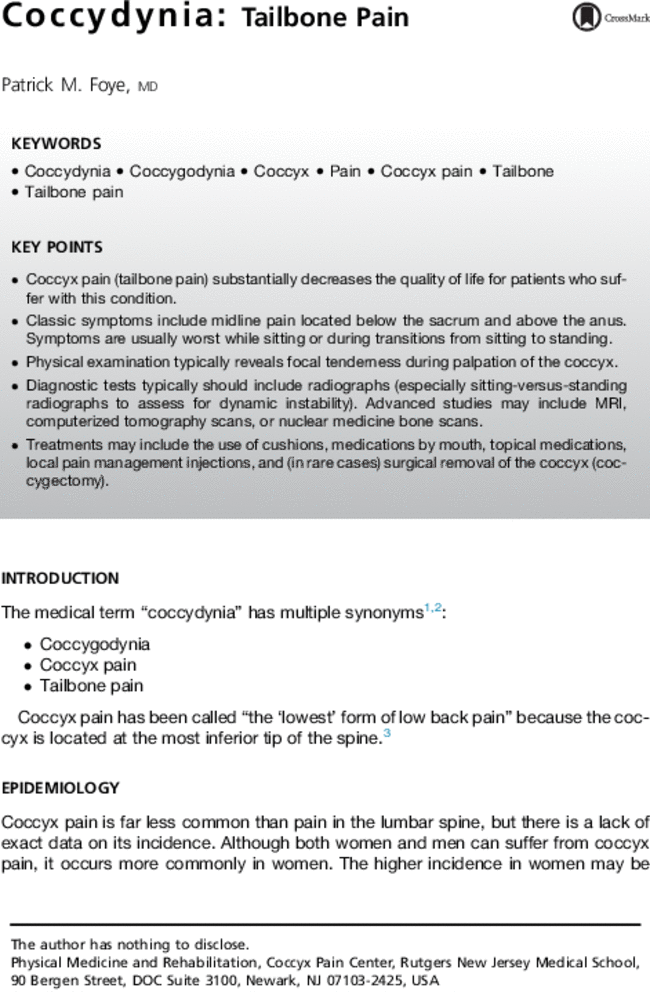Unboxing a New Publication on Tailbone Pain, Coccyx Pain, Pelvic Pain
- Publishing is an important part of any career in Academic Medicine.
- Publishing is how we share our research, our clinical pearls, our experience and expertise.
- Publishing makes all of this available to other clinicians, physicians, researchers, and others who may be interested worldwide, for years to come.
- The VIDEO below shows Patrick Foye, M.D., un-boxing a newly-received, freshly-minted copy of a new publication.
- The journal is called, “Physical Medicine and Rehabilitation Clinics of North America”.
- This entire hardcover edition was dedicated to “Pelvic Pain” and Dr. Foye wrote the chapter on “Coccydynia: Tailbone Pain” (Coccyx Pain).
- To reveal the VIDEO, click on the images or click on the link below.
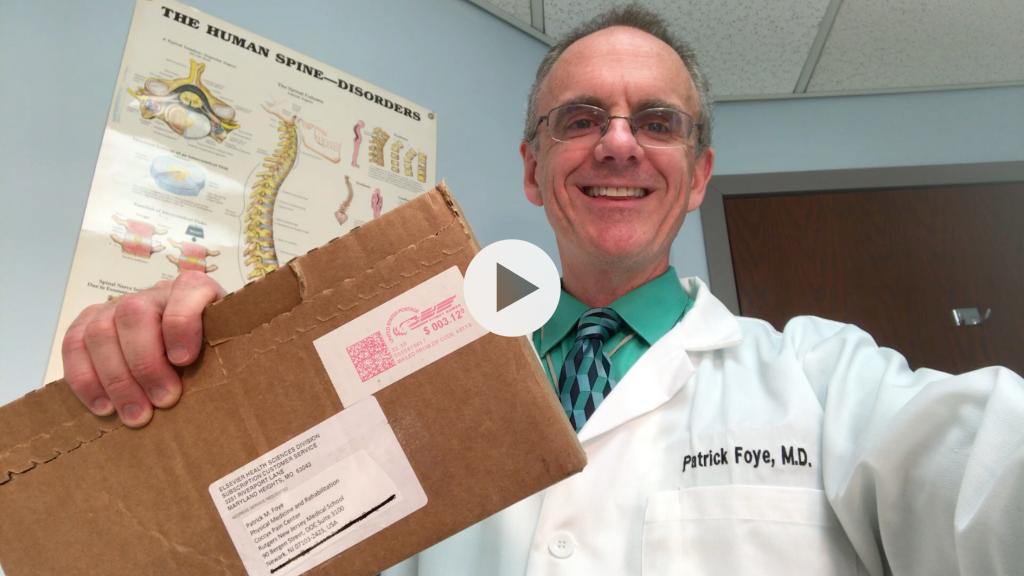
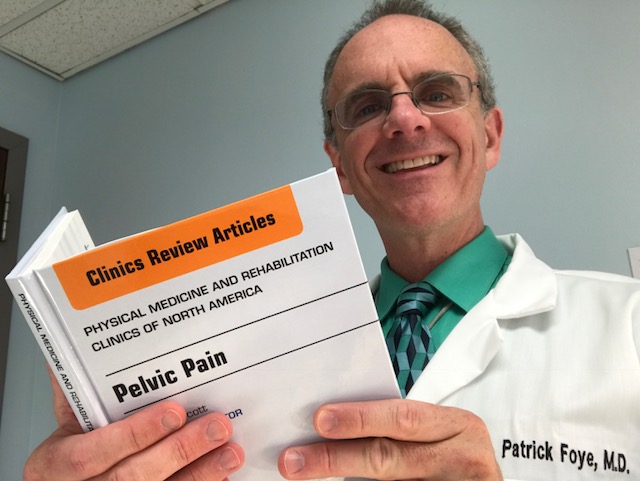
- To reveal the VIDEO, CLICK this LINK: https://youtu.be/mL0x2Ei4hx8
Below is the TEXT transcribed from Dr. Foye’s Video:
- I’m Dr.Patrick Foye, and I’m an M.D., or medical doctor, and I’m the Founder and Director of the Coccyx Pain Center or Tailbone Pain Center here in the United States, available online at www.TailboneDoctor.com.
- And the reason that I’m holding this cardboard box that arrived in the mail today is sort of an unboxing of sorts Some of you may know that in addition to treating patients I am a full-time faculty member here at Rutgers New Jersey Medical School, where I’m a Professor within the Department of Physical Medicine and Rehabilitation and being a Professor, and an academic faculty member, part of what that means is that, in addition to being a physician and treating patients, that I’m also a medical educator, that I’m teaching medical students and residents physicians and fellows and colleagues and also doing research and publications.
- And I probably have, I don’t know, easily over 100 publications (between research articles and book chapters and various publications over the years) which is not surprising given that I’ve been in academic medicine for more than twenty-one years.
- But the part that’s neat for me is that it’s still exciting, and I still love what I do, and I still love when I finally see something in print when I know that myself and my colleagues have been working on for a long time.
- So, the unboxing, of sorts… This arrived here at the Tailbone Pain Center here today and in opening it up it is basically the current addition of a journal called the Physical Medicine and Rehabilitation Clinics of North America.
- And they did an entire hardcover issue on pelvic pain specifically.
- And I was asked to write the section in here on coccyx pain or tailbone pain, since that’s my primary area.
- So I can tell you that for myself and the other physicians across the country who have been involved in this particular publication this has been at least well over two years in the making.
- Academic projects take a long time between the time you are invited to write an article or a paper or a manuscript or a book chapter and then doing the edits and going back and forth with the editors and sometimes with medical illustrators and then finally making it to publication and making it into print.
- It’s always cool when it finally comes out and you actually have a tangible copy, and the idea that this tangible copy is also showing up in other places that physicians are getting their hands on this and hopefully learning, in this case, the proper way to evaluate and treat tailbone pain.
- So within this, if I open it up here again: PM&R Clinics of North America, entire section on Pelvic Pain.
- There are lots of different authors from around the country doing their own different sections.
- There’s a section here on anatomy and physiology, office evaluation of pelvic pain in general, myofascial pain musculoskeletal pain and then the next chapter, which is mine, which is basically on coccyx pain.
- So if I swing back to that, I’ll share just a little bit with you of what’s in here for physicians.
- Now this is different than some of the things I’ve written and published more specifically for patients.
- I still continue to do that as well and I’m a huge believer in empowering patients.
- But this particular one is on is for is written for physicians.
- So if you have a physician who perhaps is a Physical Medicine and Rehabilitation doctor, this might be something that’s on their shelf.
- If you have tailbone pain you may want to ask them if they have received the pelvic pain edition of the PM&R clinics of North America journal, because there’ll be lots of information in there for them.
- And, again, in this particular chapter on coccydynia or tailbone pain.
- We talk in here about the terminology, how frequent this is, the anatomy, the different joints, ligaments, muscles, etc.
- that that attach to the tailbone.
- The different causes of tailbone pain.
- So here we’re talking about coccyx fractures, dislocations, coccygeal dynamic instability (which means an unstable joint at the tailbone, which is one of the most common causes of tailbone pain, and something that you really need sitting versus standing x-rays in order to evaluate for and make that diagnosis).
- Here I also talk about bone spurs at the lower tip of the tailbone (a common source of tailbone pain), abnormal positions of the coccyx, arthritis, sympathetic nervous system pain at the tailbone, pelvic floor dysfunction, cancer, bone infection, and lots of other things that can cause pain.
- It also educates doctors about the symptoms: pain with sitting being the most common and many patients will also have pain with sit-to-stand.
- They may have other pains in other back low back and pelvis and buttock regions as well.
- Here I mentioned about the physical exam findings to look for with tailbone pain, the diagnostic tests or imaging studies like x-rays and especially the sitting versus standing x-rays explaining to them what that is (because unfortunately many, many doctors around the country and around the world are not familiar with sitting versus standing x-rays for tailbone pain, which is really, really unfortunate because unstable joints are probably the most common cause of tailbone pain and they can only be diagnosed on imaging studies by doing the sitting versus standing images so those x-rays become really, really important).
- But I also talked about MRI and CT scans and nuclear medicine bone scans and other things in this section, which is within that area about diagnostic tests.
- I’ve also published… this is the first time I’ve published this particular algorithm, which is basically going from somebody that has pain and getting the x-rays (ideally the sitting versus standing x-rays) and then depending on what those show deciding whether the person needs to move forward with treatment versus whether they may need further imaging studies, such as MRI or CT scan or other things to look for malignancies and other conditions, depending on what your initial findings were on the initial X-rays.
- And then depending on how they respond to treatment deciding whether to circle back and if you didn’t get the advanced imaging studies (like MRI or CT scans) to consider those in those patients if they’re not getting the kind of initial relief or response.
- And then other things within treatment…
- everything from cushions to medications to
- Some of the interventional injections that can be done for tailbone pain are covered in here, from steroid injections to ganglion Impar sympathetic nerve blocks to nerve ablation.
- All of that, physical therapy and in surgical cases…
- coccygectomy, which is surgical removal of the tailbone.
- Fortunately that’s not necessary the majority of the time and is sort of something that’s done only when people have exhausted other measures.
- So, again, a lot of information packed in here for physicians.
- And hopefully, the goal really is to educate physicians so that they can be as knowledgeable and experienced as possible in evaluating and treating patients with pelvic pain and in my section for tailbone pain (coccyx pain) in particular.
- So hopefully that will be helpful for the physicians because then that will be helpful for their patients.
- So again this one medical journal mainly for physicians.
- I also have written an entire book much longer than what I have in here.
- It’s an entire book about tailbone pain.
- This one is written more for patients, or for people who are non-physicians, the people who are actually suffering with tailbone pain.
- So this one is 272 pages, all about the coccyx, covering in much more detail a lot of these things and written in layperson language, so you don’t need a medical degree by any means to read this book.
- You can find this on Amazon: you can get it as an ebook through Amazon, you can get the softcover copy through Amazon.
- At the time that I’m making this video you can still get a free copy (just pay shipping and handling) you can get that through www.TailboneBook.com.
- So lots of different ways to if you have tailbone pain and are looking for more information and looking to be empowered with knowledge, because then that helps you with knowing what makes sense in terms of evaluation or treatment.
- So again lots of information for physicians and also for patients.
- So hopefully spreading the word so that patients can get relief.
- Because a lot of people unfortunately suffer unnecessarily for long periods of time with tailbone pain because not a lot of Doc’s are familiar with how to treat it.
- If you’re looking for more information, certainly you can you can find me online at www.TailboneDoctor.com And if you have questions or comments certainly post them down below beneath the video and I’ll look forward to hearing from you and may be meeting some of you someday.
- All the best.
- Bye-bye now.
Here is the published abstract:
To come to Dr. Foye’s Tailbone Pain Center:
- Get expert medical care for your tailbone problem. Here’s what you need know: https://tailbonedoctor.com/prepare-for-your-visit/
Tailbone Pain Book:
To get your copy of Dr. Foye’s book, “Tailbone Pain Relief Now!” click on this link: www.TailbonePainBook.com
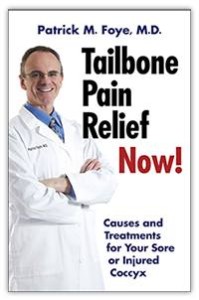
Book: “Tailbone Pain Relief Now! Causes and Treatments for Your Sore or Injured Coccyx” by Patrick Foye, M.D.
Latest posts by Patrick Foye, M.D. (see all)
- Coccygectomy: Expected Recovery and Return to Work after surgery for coccyx pain, tailbone pain. - November 28, 2023
- PRP Platelet Rich Plasma or Prolotherapy for Tailbone Pain, Coccyx Pain - October 25, 2023
- Reasons for Normal X-rays and MRI Despite Tailbone Pain, Coccyx Pain - October 3, 2023
